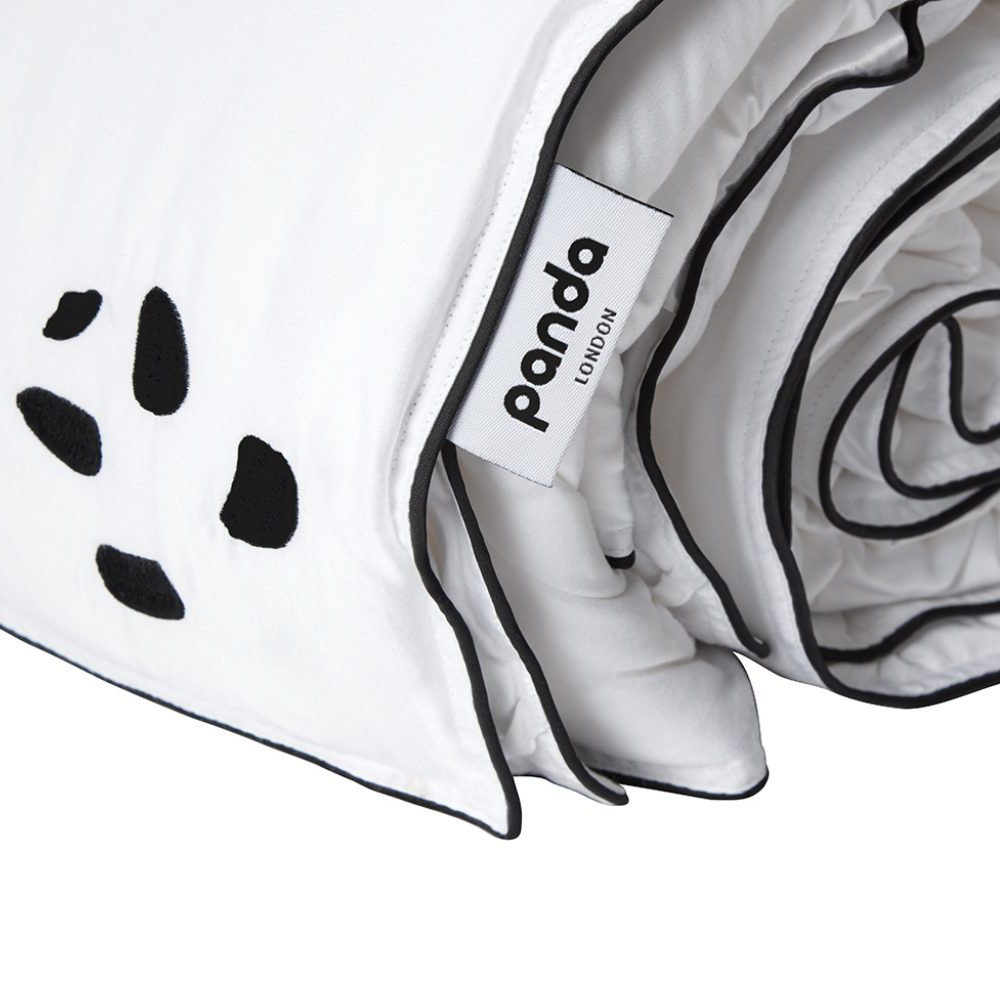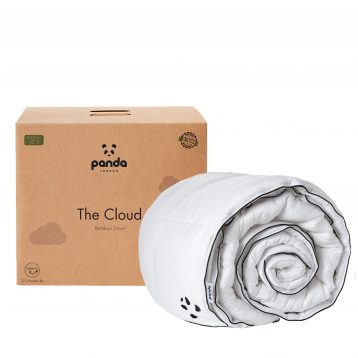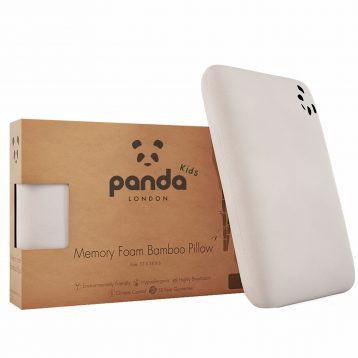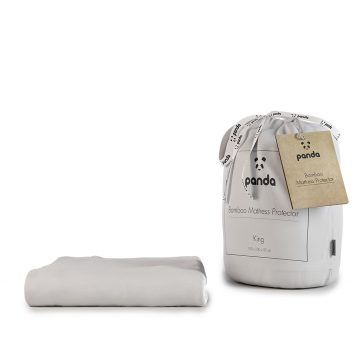How to Wash Your Duvet to Keep It in Good Condition
Last updated on April 16th, 2024 at 10:55 am
“To wash a duet, check the care label. If it is machine washable, remove the cover and use a mild detergent on a gentle cycle. Tumble dry on low with dryer balls or air dry completely to avoid mould. Ensure the duvet is thoroughly dry before reuse.”
A duvet is a cosy and essential bedding item that provides comfort and warmth during sleep – and you deserve to have one that lasts for years to come. Proper care and maintenance are crucial to ensure it continues to provide you with luxurious comfort. Read through this duvet-cleaning guide and learn how to care for your duvet, store it, and extend its lifespan…
Understanding what is your duvet made from
Before getting into the cleaning and maintenance routines, it’s important to understand the construction and materials of your duvet. Different duvets have specific care requirements based on their fill type: down, wool, synthetic, etc. A bamboo duvet is natural, but the fill can be made with synthetic materials, like our Nano-Microfibre™, made from recycled water bottles from the ocean. This is why it’s so important to know what *yours* is made from! Check the manufacturer’s guidelines or labels to understand the composition of your duvet and any specific instructions for care.
Regular cleaning tips for your duvet
Regular cleaning is essential for keeping the duvet fresh and free from dust, allergens, and stains. This means taking off the cover and examining the duvet itself to see if there are any areas that require attention. Any marks, stains or damp spots should be treated; you can make a solution by mixing a mild detergent with some warm water in order to spot-treat your duvet. Either decant the mixture into a spray bottle or dip a cloth into your bowl of solution and gently rub at any problem areas.
A cover is, of course, a great way to protect the duvet itself; they offer a barrier and come in various colours and designs to help match your bedding to the decor of your room. Caring for the covers is super easy, too, as they are made to be taken off, washed, dried, and put back on regularly.
What are some deep cleaning techniques?
Over time, your duvet may require deep cleaning to remove odours, deep-seated stains, or accumulated dirt. Depending on the fill type and care instructions, you may choose to wash it at home, opt for professional cleaning, or utilise a large-capacity washing machine at a laundrette (if you have one nearby!). Be sure to follow the manufacturer’s instructions carefully, especially when it comes to machine washing – see the optimum temperature, whether you can use the spin setting, and so on. Always opt for a mild detergent and an eco-friendly one if possible. Avoid filling the machine too much to allow space for cleaning, and dry on the line for ultimate freshness.
Drying and fluffing
When it comes to drying your duvet, you need to do so properly. Don’t pile, roll or fold your duvet while it’s drying, as this will make the filling clump up inside; air drying is also the best way to go, as a tumble dryer can get too hot and damage the fibres. Fluff it properly as it’s dry and when it’s completely dry, as this will keep it at its best and help maintain the optimum duvet loft. The maintenance practices aren’t necessarily complicated, but you do need to do it properly.
How should you store your duvet?
If you have different duvets for different seasons, then you need to be sure you are storing them correctly when not in use. While a vacuum pack storage bag can help save space, they’re not ideal as they don’t let the duvet breathe. This can cause the fill to get clumpy, and it might get mould or mildew over time. Store it somewhere airy and closed off to keep it safe from any pests like moths or mice…
Maintenance by duvet type
Different duvet materials require different types of care – for example, cleaning down duvets requires a specific detergent to care for down and feather products. Synthetic duvets, often not antibacterial and so on, can be washed at a bit of a higher temperature; this helps kill off any dust mites. It is vitally important that you research your specific duvet type and look at any instructions from your manufacturer before washing your duvet. This will help keep it in tip-top condition for a long time!
How can you troubleshoot some common duvet issues?
There are a variety of common issues that happen when people wash their duvets – and of course, you want to be able to prevent these from happening to you. These issues include clumping, shifting, and matting. The best practices for duvet care will help to stop these from happening…
Clumping refers to the filling of your duvet clumping together in certain areas; this can happen when you use too much soap or the wrong type of detergent. To prevent this, rinse it twice or change your soap. Shifting is a similar issue, and you can also prevent this by popping some tennis balls into the machine alongside your duvet. Be sure, also, not to overfill the washing machine – give it some space. You need to ensure you dry your duvet properly as if it’s left in a heap instead of hung out properly, it will stay damp inside, which can cause these issues, too.
How to extend duvet lifespan
If you invest in a good quality duvet, then you want it to last for a long time. You can do a few things to ensure this: spot clean your duvet regularly, hang it out to air from time to time, and deep clean when it needs it. Regular maintenance means that you won’t need to clean it deep particularly often, and it helps ensure you can sleep fresh every night. Your duvet-cleaning frequency doesn’t need to be once a week, but don’t leave it years in between washes!
Cleaning and maintaining your duvet
Following these care tips means that your investment in a good quality duvet is one that will last for years to come – as it should! You deserve to be cocooned in fluffy softness night after night, so looking after your duvet should be high on your list of regular cleaning priorities. Bamboo duvets get softer with every wash, too, so if you choose one of those, you’re onto a winner… Whether it’s ‘washing at home’ tips you’re after or just generally looking at keeping the duvet in good shape. Hopefully, you’ve got some answers to your questions!
FAQ
How often should I wash my duvet?
Last updated on April 16th, 2024 at 10:55 am
Washing your duvet every 3-6 months is recommended, depending on usage and personal preference. If you use a duvet cover, you may clean the duvet less frequently.
Can I wash my duvet at home?
Last updated on April 16th, 2024 at 10:55 am
Yes, most duvets can be washed at home with a machine large enough to accommodate them without cramming. Always check the care label for specific instructions.
Can duvets be tumble dried?
Last updated on April 16th, 2024 at 10:55 am
Many duvets can be tumble dried on a low heat setting. Adding tennis balls to the dryer can help fluff up down or feather duvets. Always check the care label for guidance.
How do I spot clean my duvet?
Last updated on April 16th, 2024 at 10:55 am
For small stains, apply a mixture of mild detergent and water to the area and gently rub. Rinse with a damp cloth and allow it to air dry completely.
Is it necessary to air out my duvet?
Last updated on April 16th, 2024 at 10:55 am
Yes, airing out your duvet regularly can help refresh it and remove moisture. Hang it outside on a dry day or in a well-ventilated area for a few hours.
What’s the best way to store my duvet when not in use?
Last updated on April 16th, 2024 at 10:55 am
Store your clean, dry duvet in a breathable cotton bag in a cool, dry place. Avoid plastic bags, as they can trap moisture and lead to mildew.
Can I iron my duvet?
Last updated on April 16th, 2024 at 10:55 am
Ironing is generally not recommended, especially for down or feather-filled duvets, as heat can damage the fill. If your duvet cover needs ironing, remove it from the duvet and iron it according to the care instructions.
Explore our range:
Bamboo Eye Mask
Rated 5.00 out of 5£15.29 – £16.96Panda Cloud Duvet
Rated 5.00 out of 5£84.96 – £139.95Kids Memory Foam Bamboo Pillow
Rated 5.00 out of 5£34.95Original price was: £34.95.£29.71Current price is: £29.71.Bamboo Mattress Protector
Rated 5.00 out of 5£16.96 – £42.50





